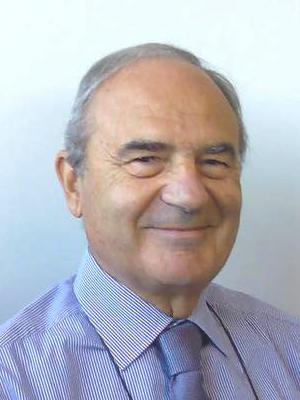Go to
Bruno Murari
Position statement:
Emerging Alternative Use of Semiconductor Technologies
Back in the 90’s, STMicroelectronics combined electronic and microfluidic elements onto a single silicon chip and gave birth to a new generation of ink-jet print heads. The mastering of mainstream microelectronics production techniques led to consistent performance, reliability above expectations at a very affordable price. Microfluidics and electronics again were then integrated into devices for fast and affordable DNA analysis and optical components and other sensors for wearable skin patches. Later, the integration of mechanical and electronic functions in silicon fuelled the skyrocketing growth of the MEMS market. The key ingredients for success were silicon, with its mechanical properties and features, and relying on mass production techniques originally developed for mainstream microelectronic circuits. Now new devices, merging electronic and non-electronic functions, use silicon and additional (e.g. PZT and Cobalt-based) materials for better performances. In the future, equipment and processes originally created for microelectronics will be exported to other industries, with the advantages of well-proven parallel manufacturing technologies applied to non-silicon materials for the production of reliable, miniaturized, very precise and cost affordable components.
About the panel member:
 Bruno Murari is a Scientific Advisor to ST and some R&D centers and corporations in Italy, France and Switzerland, after his retirement as the Director of the ST Castelletto R&D laboratories in Milan, Italy.
Bruno Murari is a Scientific Advisor to ST and some R&D centers and corporations in Italy, France and Switzerland, after his retirement as the Director of the ST Castelletto R&D laboratories in Milan, Italy.
Murari started his career at Edison Volta and ENI and joined SGS -- now STMicroelectronics -- in 1961. In 1972 he became head of linear IC design and development and in 1981 was appointed to lead the Castelletto site – an R&D center and fab for smart-power ICs, MEMS (Micro-Electro-Mechanical Systems), and photonics. Murari has significantly contributed to ST's leadership position in high-power IC technology, through designing and supervising the design of more than 2000 ICs, producing over 80 patents.
Murari has led the development, technology transfer, and ramp-up of micromachining technology for MEMS, a segment in which ST has become a pioneer and world leader. In 2011 he received the SAPIO award for Industry from the President of Italy’s Republic.
Born in Treviso in 1936, Murari earned a degree in Electrical Technology from Pacinotti Technical Institute and a postgraduate degree in electronics from Beltrami Institute, Milan. In 2002 he received an Honorary Degree in Electronic Engineering from Politecnico of Milan for fundamental innovations in semiconductor technologies and IC design.
Secondary navigation
- EPFL Workshop on Logic Synthesis and Emerging Technologies
- Luca Amaru
- Luca Benini
- Giovanni De Micheli
- Srini Devadas
- Antun Domic
- Rolf Drechsler
- Pierre-Emmanuel Gaillardon
- Jie-Hong Roland Jiang
- Akash Kumar
- Shahar Kvatinsky
- Yusuf Leblebici
- Shin-ichi Minato
- Alan Mishchenko
- Vijaykrishnan Narayanan
- Ian O'Connor
- Andre Inacio Reis
- Martin Roetteler
- Julien Ryckaert
- Mathias Soeken
- Christof Teuscher
- Zhiru Zhang
- Symposium on Emerging Trends in Computing
- Layout synthesis: A golden DA topic
- EPFL Workshop on Logic Synthesis & Verification
- Luca Amaru
- Luca Benini
- Robert Brayton
- Maciej Ciesielski
- Valentina Ciriani
- Jovanka Ciric-Vujkovic
- Jason Cong
- Jordi Cortadella
- Giovanni De Micheli
- Antun Domic
- Rolf Drechsler
- Henri Fraisse
- Paolo Ienne
- Viktor Kuncak
- Enrico Macii
- Igor Markov
- Steven M. Nowick
- Tsutomu Sasao
- Alena Simalatsar
- Leon Stok
- Dirk Stroobandt
- Tiziano Villa
- Symposium on Emerging Trends in Electronics
- Raul Camposano
- Anantha Chandrakasan
- Jo De Boeck
- Gerhard Fettweis
- Steve Furber
- Philippe Magarshack
- Takayasu Sakurai
- Alberto Sangiovanni-Vincentelli
- Ken Shepard
- VENUE
- Panel on Circuits in Emerging Nanotechnologies
- Panel on Emerging Methods of Computing
- Panel on The Role of Universities in the Emerging ICT World
- Panel on Design Challenges Ahead
- Panel on Alternative Use of Silicon
- Nano-Bio Technologies for Lab-on-Chip
- Functionality-Enhanced Devices Workshop
- More Moore: Designing Ultra-Complex System-on-Chips
- Design Technologies for a New Era
- Nanotechnology for Health
- Secure Systems Design
- Surface Treatments and Biochip Sensors
- Security/Privacy of IMDs
- Nanosystem Design and Variability
- Past Events Archive
